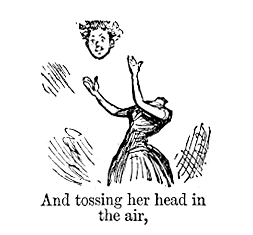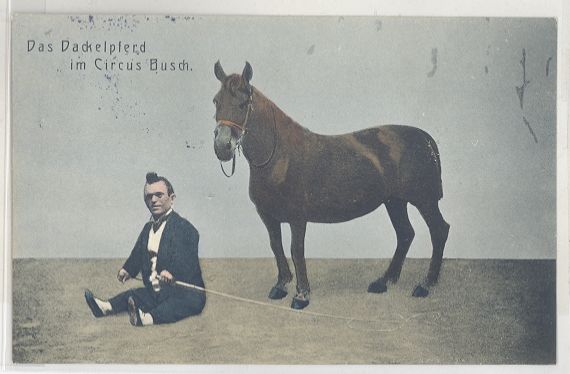|
Living In Oblivion
''Living in Oblivion'' is a 1995 American independent black comedy film, written and directed by Tom DiCillo, and starring Steve Buscemi, Catherine Keener, Dermot Mulroney, Danielle von Zerneck, James LeGros and Peter Dinklage in his film debut. The film won the Waldo Salt Screenwriting Award at the 1995 Sundance Film Festival for DiCillo. The film received critical acclaim. Plot The film is divided into three parts, all of which concern the making of a low-budget movie featuring the same director, crew and substantially the same cast. Part one: Director Nick Reve ( Steve Buscemi) is shooting a low-budget independent film in the middle of New York City. The catering crew are under-funded and apathetic, deciding not to replace a carton of milk that has been on the craft service table for a week. The scene being shot is a difficult one; a young woman, Ellen, reproaches her elderly mother (Rica Martens) for not intervening when the father beat Ellen as a child. On the set, ju ... [...More Info...] [...Related Items...] OR: [Wikipedia] [Google] [Baidu] |
Tom DiCillo
Thomas A. DiCillo (born August 14, 1953) is an American film director, screenwriter and cinematographer. Early life He was born in Camp Le Jeune, North Carolina. His father was Italian and his mother was from New England. He studied creative writing at Old Dominion University in Norfolk, Virginia and went on to study filmmaking at New York University's Film School alongside Jim Jarmusch, Howard Brookner, Sara Driver and Spike Lee. Subsequently, he worked as an actor, then cinematographer, before making his own films. Career For his first film, '' Johnny Suede'' (1991), DiCillo cast the then-unknown Brad Pitt and Catherine Keener in what would be their first starring roles. It received a nomination for a Grand Jury Prize at the Sundance Film Festival. For his second film, '' Living in Oblivion'', DiCillo received acclaim for his satire of independent film-making. This 1995 black comedy, itself a low-budget independent film, features Steve Buscemi as a director driven to near- ... [...More Info...] [...Related Items...] OR: [Wikipedia] [Google] [Baidu] |
Cinematographer
The cinematographer or director of photography (sometimes shortened to DP or DOP) is the person responsible for the photographing or recording of a film, television production, music video or other live action piece. The cinematographer is the chief of the camera and light crews working on such projects and would normally be responsible for making artistic and technical decisions related to the image and for selecting the camera, film stock, lenses, filters, etc. The study and practice of this field is referred to as cinematography. The cinematographer is a subordinate of the director, tasked with capturing a scene in accordance with director’s vision. Relations between the cinematographer and director vary. In some instances, the director will allow the cinematographer complete independence, while in others, the director allows little to none, even going so far as to specify exact camera placement and lens selection. Such a level of involvement is less common when the dire ... [...More Info...] [...Related Items...] OR: [Wikipedia] [Google] [Baidu] |
Short Order Cook
Short order cooking, in the restaurant business, is the preparation of foods that are quick to cook. Many small restaurants serve only short-order items, which include fried, broiled, griddled foods, as well as assembled foods like sandwiches. Short order cooking is common at greasy spoon A greasy spoon is a small, cheap restaurant – either an American diner or coffee shop, or a British or Irish cafe – typically specializing in fried foods or home-cooked meals. The term ''greasy spoon'' has been used in the United States sinc ... and diner restaurants. A cook responsible for short order cooking is a short order cook. The U.S. Bureau of Labor Statistics defines the role of short order cooks as those who, "Prepare and cook to order a variety of foods that require only a short preparation time. May take orders from customers and serve patrons at counters or tables," and it specifically excludes fast food cooks. As of May 2019, the U.S. Bureau of Labor Statistics estimates t ... [...More Info...] [...Related Items...] OR: [Wikipedia] [Google] [Baidu] |
Waitress
Waiting staff (British English), waitstaff (North American English), waiters (male) / waitresses (female), or servers (North American English), are those who work at a restaurant, a diner, or a bar and sometimes in private homes, attending to customers by supplying them with food and drink as requested. Waiting staff follow rules and guidelines determined by the manager. Waiting staff carry out many different tasks, such as taking orders, food-running, polishing dishes and silverware, helping bus tables and restocking working stations with needed supplies. Waiting on tables is part of the service sector and among the most common occupations in the United States. The Bureau of Labor Statistics estimates that, as of May 2008, there were over 2.2 million people employed as servers in the U.S. Many restaurants choose a specific uniform for their waiting staff to wear. Waiting staff may receive tips as a minor or major part of their earnings, with customs varying widely from c ... [...More Info...] [...Related Items...] OR: [Wikipedia] [Google] [Baidu] |
French Language
French ( or ) is a Romance languages, Romance language of the Indo-European languages, Indo-European family. It descended from the Vulgar Latin of the Roman Empire, as did all Romance languages. French evolved from Gallo-Romance, the Latin spoken in Gaul, and more specifically in Northern Gaul. Its closest relatives are the other langues d'oïl—languages historically spoken in northern France and in southern Belgium, which French (Francien) largely supplanted. French was also substratum, influenced by native Celtic languages of Northern Roman Gaul like Gallia Belgica and by the (Germanic languages, Germanic) Frankish language of the post-Roman Franks, Frankish invaders. Today, owing to France's French colonial empire, past overseas expansion, there are numerous French-based creole languages, most notably Haitian Creole language, Haitian Creole. A French-speaking person or nation may be referred to as Francophone in both English and French. French is an official language in ... [...More Info...] [...Related Items...] OR: [Wikipedia] [Google] [Baidu] |
Room Tone
In filmmaking and television production, presence, also known as room tone, or simply room sound, is the "silence" recorded at a location or space when no dialogue is spoken. Presence is similar to ambience, but is distinguished by a lack of explicit background noise. Every location has a distinct presence created by the position of the microphone in relation to the space boundaries. A microphone placed in two different parts of the same room will record two distinct presences. This is because of the unique spatial relationship between the microphone and boundaries such as walls, ceilings, and floors, and other objects in a room. Presence is recorded during the production stage of filmmaking. It is used to help create the film sound track, where presence may be intercut with dialogue to smooth out any sound edit points. The sound track "going dead" would be perceived by the audience not as silence, but as a failure of the sound system. For this reason presence is normally recorded ... [...More Info...] [...Related Items...] OR: [Wikipedia] [Google] [Baidu] |
Cliché
A cliché ( or ) is an element of an artistic work, saying, or idea that has become overused to the point of losing its original meaning or effect, even to the point of being weird or irritating, especially when at some earlier time it was considered meaningful or novel. In phraseology, the term has taken on a more technical meaning, referring to an expression imposed by conventionalized linguistic usage. The term is often used in modern culture for an action or idea that is expected or predictable, based on a prior event. Typically pejorative, "clichés" may or may not be true. Some are stereotypes, but some are simply truisms and facts. Clichés often are employed for comedic effect, typically in fiction. Most phrases now considered clichéd originally were regarded as striking but have lost their force through overuse. The French poet Gérard de Nerval once said, "The first man who compared woman to a rose was a poet, the second, an imbecile." A cliché is often a vivid d ... [...More Info...] [...Related Items...] OR: [Wikipedia] [Google] [Baidu] |
Dwarfism
Dwarfism is a condition wherein an organism is exceptionally small, and mostly occurs in the animal kingdom. In humans, it is sometimes defined as an adult height of less than , regardless of sex; the average adult height among people with dwarfism is , although some individuals with dwarfism are slightly taller. ''Disproportionate dwarfism'' is characterized by either short limbs or a short torso. In cases of ''proportionate dwarfism'', both the limbs and torso are unusually small. Intelligence is usually normal, and most have a nearly normal life expectancy. People with dwarfism can usually bear children, though there are additional risks to the mother and child dependent upon the underlying condition. The most common and recognisable form of dwarfism in humans (comprising 70% of cases) is achondroplasia, a genetic disorder whereby the limbs are diminutive. Growth hormone deficiency is responsible for most other cases. Treatment depends on the underlying cause. Those ... [...More Info...] [...Related Items...] OR: [Wikipedia] [Google] [Baidu] |
Dream Sequence
A dream sequence is a technique used in storytelling, particularly in television and film, to set apart a brief interlude from the main story. The interlude may consist of a flashback, a flashforward, a fantasy, a vision, a dream, or some other element. Purposes Commonly, dream sequences appear in many films to shed light on the psychical process of the dreaming character or give the audience a glimpse into the character's past. For instance, in '' Pee-wee's Big Adventure'', the purpose of Pee-wee's dreams is to inform the audience of his anxieties and fears after losing his bike. Other times major action takes place in dreams, allowing the filmmaker to explore infinite possibilities, as Michel Gondry demonstrates in ''The Science of Sleep''. Harvard psychologist Deirdre Barrett points out in the book ''The Committee of Sleep'' that, while the main content of dream sequences is determined by the film's overall plot, visual details often reflect the individual dream experience ... [...More Info...] [...Related Items...] OR: [Wikipedia] [Google] [Baidu] |
Twinkie
A Twinkie is an American snack cake, described as "golden sponge cake with a creamy filling". It was formerly made and distributed by Hostess Brands. The brand is currently owned by Hostess Brands, Inc. (), having been formerly owned by private equity firms Apollo Global Management and C. Dean Metropoulos and Company as the second incarnation of Hostess Brands. During bankruptcy proceedings, Twinkie production was suspended on November 15, 2012 and resumed after an absence of a few months from American store shelves, becoming available again nationwide on July 15, 2013. Grupo Bimbo's Vachon Inc., which owns the Canadian rights to the product and made them during their absence from the U.S. market, produces Twinkies in Canada at a bakery in Montreal. They are made in Emporia, Kansas in the U.S. Twinkies are also available in Mexican stores as "Submarinos" made by Marinela, and as "Tuinky" made by Wonder; both Marinela and Wonder are also subsidiaries of Mexican bread compan ... [...More Info...] [...Related Items...] OR: [Wikipedia] [Google] [Baidu] |
Production Sound Mixer
A production sound mixer, location sound recordist, location sound engineer, or simply sound mixer is the member of a film crew or television crew responsible for recording all sound recording on set during the filmmaking or television production using professional audio equipment, for later inclusion in the finished product, or for reference to be used by the sound designer, sound effects editors, or foley artists (aka foley dancers). This requires choice and deployment of microphones, choice of recording media, and mixing of audio signals in real time. Usually, the recordist will arrive on location with their own equipment, which normally includes microphones, radio systems, booms, mixing desk, audio storage, headphones, cables, tools, and a paper or computer sound logs. The recordist may be asked to capture a wide variety of wild sound on location, and must also consider the format of the finished product (mono, stereo or multi channels). Production sound mixers are tasked wit ... [...More Info...] [...Related Items...] OR: [Wikipedia] [Google] [Baidu] |

.jpg)




